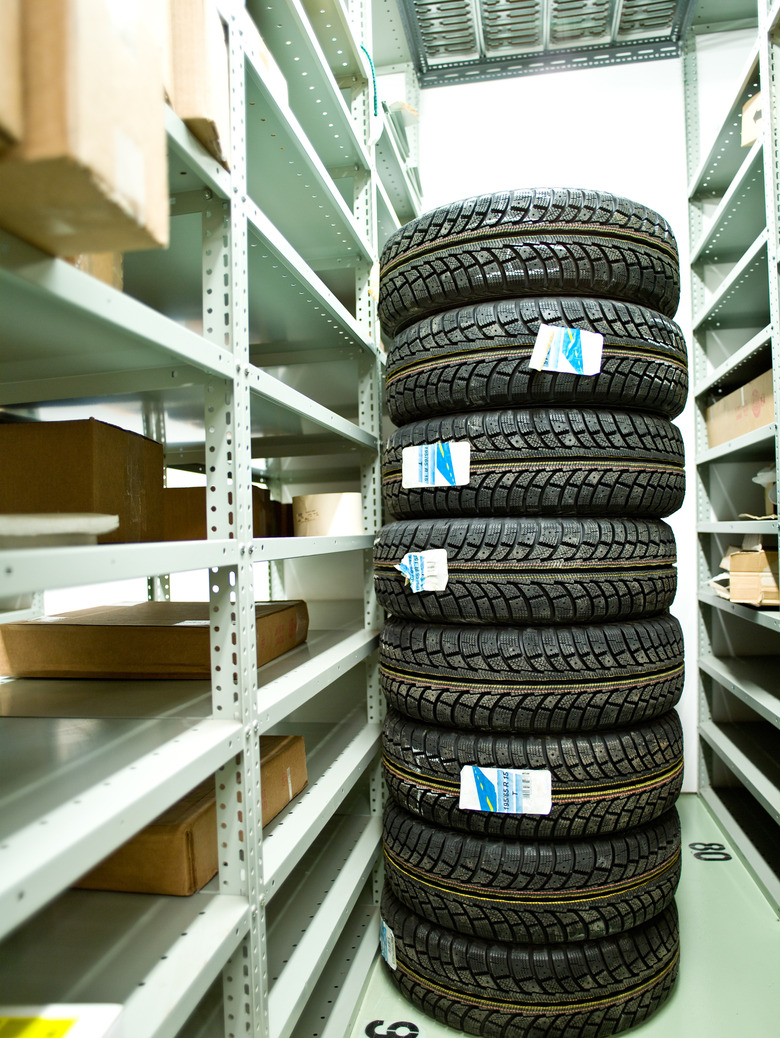How To Harden Rubber
The process of hardening rubber is known as vulcanization. This method was discovered accidentally in the early 19th century and then developed in order to find some way to make latex, the natural excretion of rubber trees, more rigid and resistant to abrasion. After heat is applied, sulfur and other chemicals are added to natural rubber. The order in which the chemicals are added, as well as their amount and nature, are crucial to the success of the vulcanization process. While still hot, the vulcanized rubber is placed in a mold. Upon cooling, a shaped and hardened rubber remains.
Step 1
Wear gloves since the rubber vulcanization molding machine will have to heat up to at least 140 degrees Celsius. The machinery will get hot and the molds may still be warm when you remove them. Also, natural rubber is adhesive and will stick to your bare hands.
Step 2
Mix sulfur into the desired quantity of latex. The amount of sulfur added is determined using a ratio known as parts by weight per hundred parts of rubber (pphr). The standard amount used in industry today is 2.5 pphr. This ratio can be altered to create vulcanized rubber with different properties, but 2.5 pphr ensures the highest level of durability.
Step 3
Add 1 pphr of zinc oxide to the mixture. This compound activates the vulcanization process and helps the sulfur make better molecular links with the natural rubber. This increases durability in the final product.
Step 4
Add one of many possible accelerators to the latex mixture. Thiazole and sulfenamide are common choices. The ratio can vary from 1 to 3 pphr.
Step 5
Add 1 pphr of an anti-oxidant to the mixture. Anti-oxidants will prevent deterioration of the finished product's exterior due to oxidation from molecular oxygen or ozone in the air.
Step 6
Heat the mixture to somewhere between 140 degrees and 180 degrees Celsius. The temperature maintained throughout the vulcanization will affect the way the sulfur forms a polymer, or chain of molecules, with the natural rubber.
Step 7
Pour the liquid vulcanized rubber into a mold of your choice. Allow it to cool. The finished product will be durable, resistant to abrasion and oxidation and much harder than the natural latex with which you began the process.
Things Needed
- Latex, or natural rubber
- Rubber Vulcanization Molding Machine
- Gloves
- Sulfur
- Zinc oxide
- Stearic acid
- Accelerant (Sulfenamide or Thiazole)
Cite This Article
MLA
Paxton, Robert. "How To Harden Rubber" sciencing.com, https://www.sciencing.com/harden-rubber-8760550/. 24 April 2017.
APA
Paxton, Robert. (2017, April 24). How To Harden Rubber. sciencing.com. Retrieved from https://www.sciencing.com/harden-rubber-8760550/
Chicago
Paxton, Robert. How To Harden Rubber last modified March 24, 2022. https://www.sciencing.com/harden-rubber-8760550/
